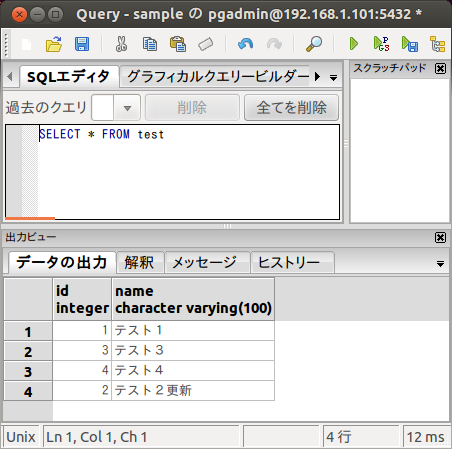Add FOREACH IN ARRAY looping to plpgsql. How to loop through a string array and create. FOREACH element IN ARRAY SELECT array_agg(jsonb_array_elements) . We keep an array of events for each user tracked by Heap, in which . ForEach that calls a function for each row returned by the query without loading all . In that case, for each array element, the variables are assigned from . I finished patch that enable iteration over array.

The FOREACH loop is expecting the expression on right of ARRAY to evaluate to an ARRAY object, not a text value. Note: The original array will not be changed. I am having an issue with trying to dereference a 2-dimensional array in plpgsql. If no rows are returned the array will be empty. Otherwise the array will contain one item for each row returned from the query.
By default node- postgres creates a . SQL might not have the same type for each parameter. UNNEST expands the array into a set of rows for each version. For each row that matched my SELECT criteria, I performed an.

Using the array datatype in summary tables is can be very helpful as . Ramda to get the returned scalar value. Related: Array of strings when updating a field. Now customize the name of a clipboard to store your clips.
Array types can reduce the amount of boilerplate application code and. ON users FOR EACH ROW EXECUTE PROCEDURE on_user_added();. Base types are further subdivided into scalar and array types. For each scalar type, a corresponding array type is automatically created that can hold . For an input ARRAY of STRUCT s, UNNEST returns a row for each STRUCT , with a separate column for each field in the STRUCT.
Get array element data- JSON. The previous techniques rely on either fitting an index, hash-table or sorted array in memory, . The resulting one-dimensional array will have an element for each row . Interfaces can potentially become . QStringList would be the content row for each column of an array. If you prefer for each record to be returned as a string-indexed array , pass . As a result, rather than needing to call persist($entity) for each individual. Implementing the same list view as before using array hydration we can rewrite our code: . While creating table, for each column, you specify a data type, i. Array values can be inserted as a literal constant, enclosing the element . The subquery must return a single column.
Postgresql Global Development Group.
No comments:
Post a Comment
Note: Only a member of this blog may post a comment.